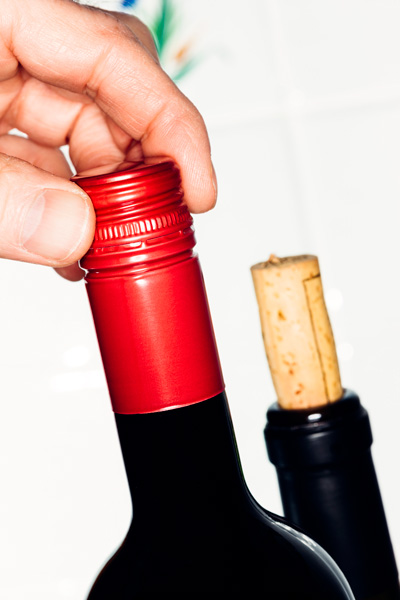 Fifteen years ago I wrote a piece called “To Screw or Unscrew the Cap,” which chronicled my journey from ardent detractor of the screw cap to stalwart supporter. My change of heart, though it would be more accurate to say change of mind or palate, came about not from any sense of aesthetic appeal on the part of the cap but from the simple fact that caps consistently do their job well. In fact, the screw cap does its job better than cork. This fact has hit home more times than I care to remember, and I find the reminder especially poignant after opening a special bottle of wine that had lain comfortably in my cellar for a number of years, only to open it and discover that the wine is corked. Those special bottles I had saved for some monumental occasion or another were completely undrinkable. The wine didn’t start life corked, nor did the winemaker make a mistake or the temperature control in the cellar fail. The wine was sound when it entered the bottle, but the cork was not. The cork was infected with TCA (trichloroanisole), which is found naturally in the bark of some cork oak or is formed by a chemical reaction of phenols (organic compounds found in grapes, corks, and other plant matter) with mold spores. TCA can also be activated by chlorine. Although harmless, TCA can render a wine totally undrinkable (which was the case with my special bottles) or it can impart only a slight mustiness or muted flavor to wine. In either case, the pleasure is gone.
Fifteen years ago I wrote a piece called “To Screw or Unscrew the Cap,” which chronicled my journey from ardent detractor of the screw cap to stalwart supporter. My change of heart, though it would be more accurate to say change of mind or palate, came about not from any sense of aesthetic appeal on the part of the cap but from the simple fact that caps consistently do their job well. In fact, the screw cap does its job better than cork. This fact has hit home more times than I care to remember, and I find the reminder especially poignant after opening a special bottle of wine that had lain comfortably in my cellar for a number of years, only to open it and discover that the wine is corked. Those special bottles I had saved for some monumental occasion or another were completely undrinkable. The wine didn’t start life corked, nor did the winemaker make a mistake or the temperature control in the cellar fail. The wine was sound when it entered the bottle, but the cork was not. The cork was infected with TCA (trichloroanisole), which is found naturally in the bark of some cork oak or is formed by a chemical reaction of phenols (organic compounds found in grapes, corks, and other plant matter) with mold spores. TCA can also be activated by chlorine. Although harmless, TCA can render a wine totally undrinkable (which was the case with my special bottles) or it can impart only a slight mustiness or muted flavor to wine. In either case, the pleasure is gone.
So what does one do with a seriously corked bottle? If it is a recent purchase, I suggest you return it to your merchant and request a replacement. Otherwise, you pour it down the drain as I have sadly done on more than one occasion, including a fine bottle of Chateaux Margaux. TCA afflicts the rich and poor alike, an equal opportunity nemesis to expensive and inexpensive wines unless the wine is closed with a screw cap. Corked bottles are happily becoming increasingly rare, but they do still occur. I don’t love the aesthetic appeal of the cap, and I miss the sound of good cork exiting a bottle, but I don’t miss corked bottles. Consequently, I say “bring on the screw caps!” They may not be gorgeous or romantic, but they allow wine to come to my table and yours just the way the winemaker had intended, so let’s not be snobbish about what encloses our wines because what is in the bottle and our glasses are all that matter. Besides, many of the world’s finest and most expensive wines now come with a cap.
Sauld!
Don





